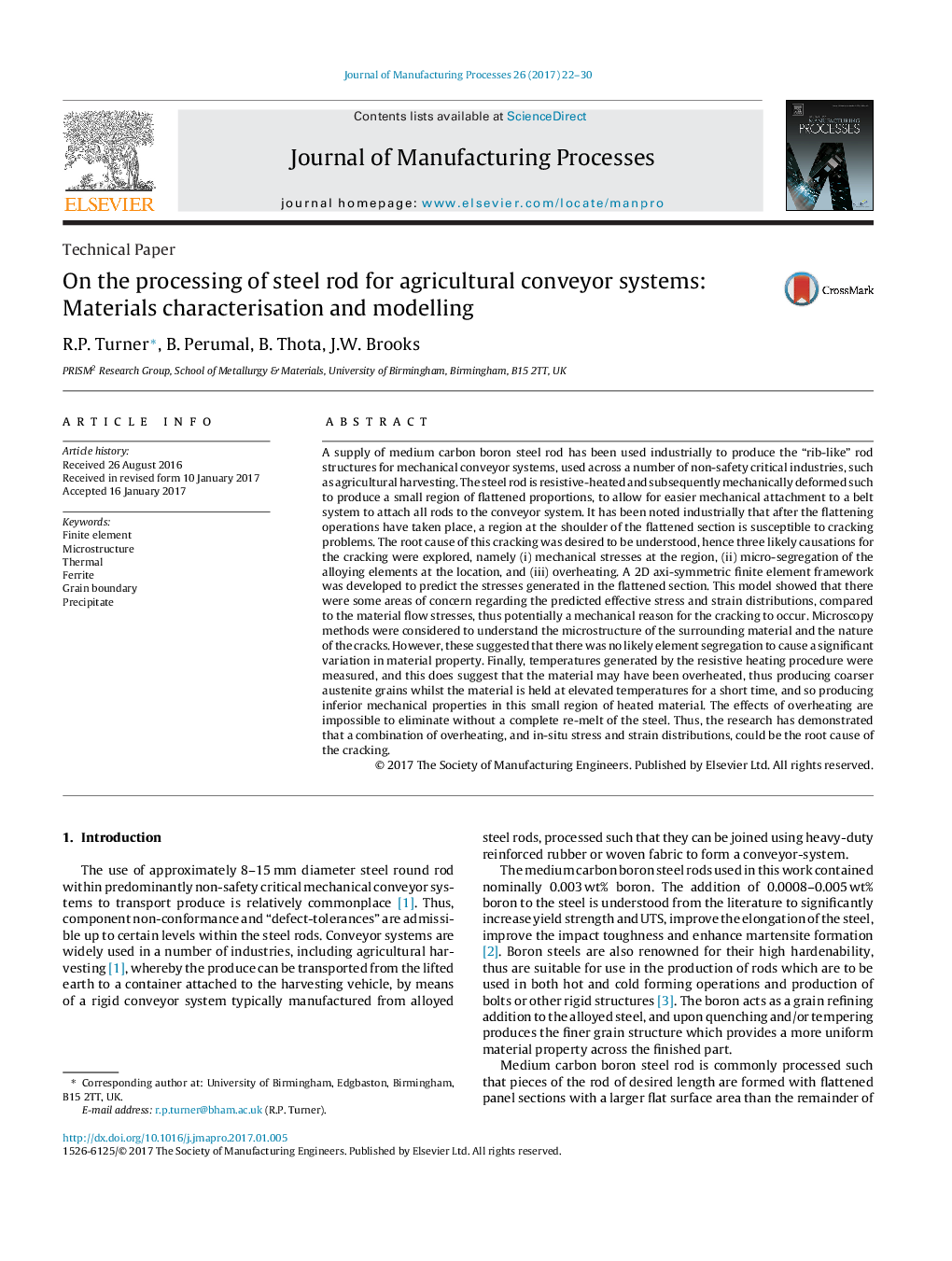| کد مقاله | کد نشریه | سال انتشار | مقاله انگلیسی | نسخه تمام متن |
|---|---|---|---|---|
| 5469269 | 1519230 | 2017 | 9 صفحه PDF | دانلود رایگان |
عنوان انگلیسی مقاله ISI
On the processing of steel rod for agricultural conveyor systems: Materials characterisation and modelling
ترجمه فارسی عنوان
در پردازش میله فولاد برای سیستم های نقاله های کشاورزی: مشخصات مواد و مدل سازی
دانلود مقاله + سفارش ترجمه
دانلود مقاله ISI انگلیسی
رایگان برای ایرانیان
کلمات کلیدی
المان محدود، ریز ساختار، حرارتی فریت، مرز دانه، رسوب،
موضوعات مرتبط
مهندسی و علوم پایه
سایر رشته های مهندسی
مهندسی صنعتی و تولید
چکیده انگلیسی
A supply of medium carbon boron steel rod has been used industrially to produce the “rib-like” rod structures for mechanical conveyor systems, used across a number of non-safety critical industries, such as agricultural harvesting. The steel rod is resistive-heated and subsequently mechanically deformed such to produce a small region of flattened proportions, to allow for easier mechanical attachment to a belt system to attach all rods to the conveyor system. It has been noted industrially that after the flattening operations have taken place, a region at the shoulder of the flattened section is susceptible to cracking problems. The root cause of this cracking was desired to be understood, hence three likely causations for the cracking were explored, namely (i) mechanical stresses at the region, (ii) micro-segregation of the alloying elements at the location, and (iii) overheating. A 2D axi-symmetric finite element framework was developed to predict the stresses generated in the flattened section. This model showed that there were some areas of concern regarding the predicted effective stress and strain distributions, compared to the material flow stresses, thus potentially a mechanical reason for the cracking to occur. Microscopy methods were considered to understand the microstructure of the surrounding material and the nature of the cracks. However, these suggested that there was no likely element segregation to cause a significant variation in material property. Finally, temperatures generated by the resistive heating procedure were measured, and this does suggest that the material may have been overheated, thus producing coarser austenite grains whilst the material is held at elevated temperatures for a short time, and so producing inferior mechanical properties in this small region of heated material. The effects of overheating are impossible to eliminate without a complete re-melt of the steel. Thus, the research has demonstrated that a combination of overheating, and in-situ stress and strain distributions, could be the root cause of the cracking.
ناشر
Database: Elsevier - ScienceDirect (ساینس دایرکت)
Journal: Journal of Manufacturing Processes - Volume 26, April 2017, Pages 22-30
Journal: Journal of Manufacturing Processes - Volume 26, April 2017, Pages 22-30
نویسندگان
R.P. Turner, B. Perumal, B. Thota, J.W. Brooks,
